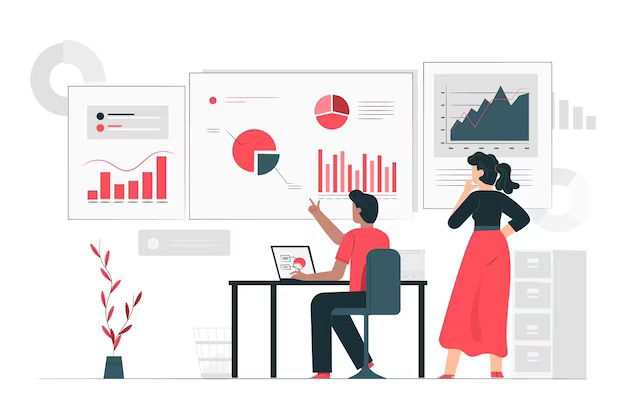Business Analytics
Business analytics can help businesses gain insights, improve accuracy, efficiency, and response time,
and make better decisions using data visualization and quantitative analysis.
Business analytics also helps businesses
monitor their progress, performance, and goals, and encourages a culture of teamwork and contribution.
Data science is an important relaed area that can add value to any business by helping them analyze raw information and transform it into workable action.
Data science is valuable to any business irrespective of its industry. It can also help businesses identify when and where the product or service is in high demand, and what is the profile of the current customers.
Benefits of Business Analytics and Data Science
Here are some benefits of Business Analytics and Data Science:- Improving productivity and efficiency of staff in your business
- Supporting decision-making processes in business
- Personalizing marketing messages and developing targeted offers
- Encouraging a culture of efficiency and teamwork by allowing the employees a chance to share their insights and contribute to the decision-making process
- Measuring performance
- Providing information to internal finances
- Developing better products
- Mitigating risk and fraud
- Predicting outcomes and trends

Steps for implementing Business Analytics
Here are some steps to implementing business analytics:- Identify the business problem and determine which metrics and analyses techniques are appropriate for the target study
- Collect the data
- Analyze the data
- Report on findings
- Determine which actions to take based on the findings

How you can exploit Business Analytics?
Business analytics can be used in various aspects of business, such as product development, pricing, and sales optimization. Personalized advertising, contextual KPI data access,
and centralizing data from across the business are examples of business intelligence.
Some examples of how different companies used business analytics include:
- A clothing retailer used a retail dashboard to optimize its customer value and new customer acquisition, resulting in significant growth in its customer base and increased brand loyalty
- Inventory optimization is another example of operational business intelligence
- A retailer may rely on business analytics to anticipate demand.
- Manufacturers use business analytics to monitor and manage the performance of their factories and suppliers and to anticipate customer demand.
- Marketers can analyze millions of customer interactions to better understand customer sentiment, intent and needs
- Market segmentation: uses clustering algorithms to group customers based on age, gender, region, interests, etc.
- Speech and image recognition: used for identifying patterns in customer data to improve customer support processes
- Fraud detection: used to mitigate risk and fraud.
- Predictive analytics: used for predicting outcomes and trends
- Customer experience: used to improve customer experiences.
How we support you?
We can help companies strategize, design, build, and operationalize data and analytical platforms.
For those that have data but don’t know where to start, we can help you understand the big picture.
For Organizations that have heavily invested in their data & analytics solutions, we can help solve their most complex
challenges and tap into the full value of their data by reducing data silos, harnessing data to drive business insights and
empowering leaders with the information they need to make the right decisions.
We help you by
- Increasing access to data by providing data democratization across your enterprise
- Removing data silos to improve collaboration, transparency, and trust
- Strengthening insights and reliability so teams can make more informed, strategic decisions
- Delivering a custom-fit solution from scratch or enhancing existing solutions to capture, store, analyze, and visualize data
- Leveraging business intelligence (BI) tools to deliver faster analysis through intuitive dashboards
- Using data governance best practices to improve the quality and accuracy of data
- Optimizing internal operational processes to maximize output and minimize costs
- Providing opportunities to drive more meaningful relationships with customers

